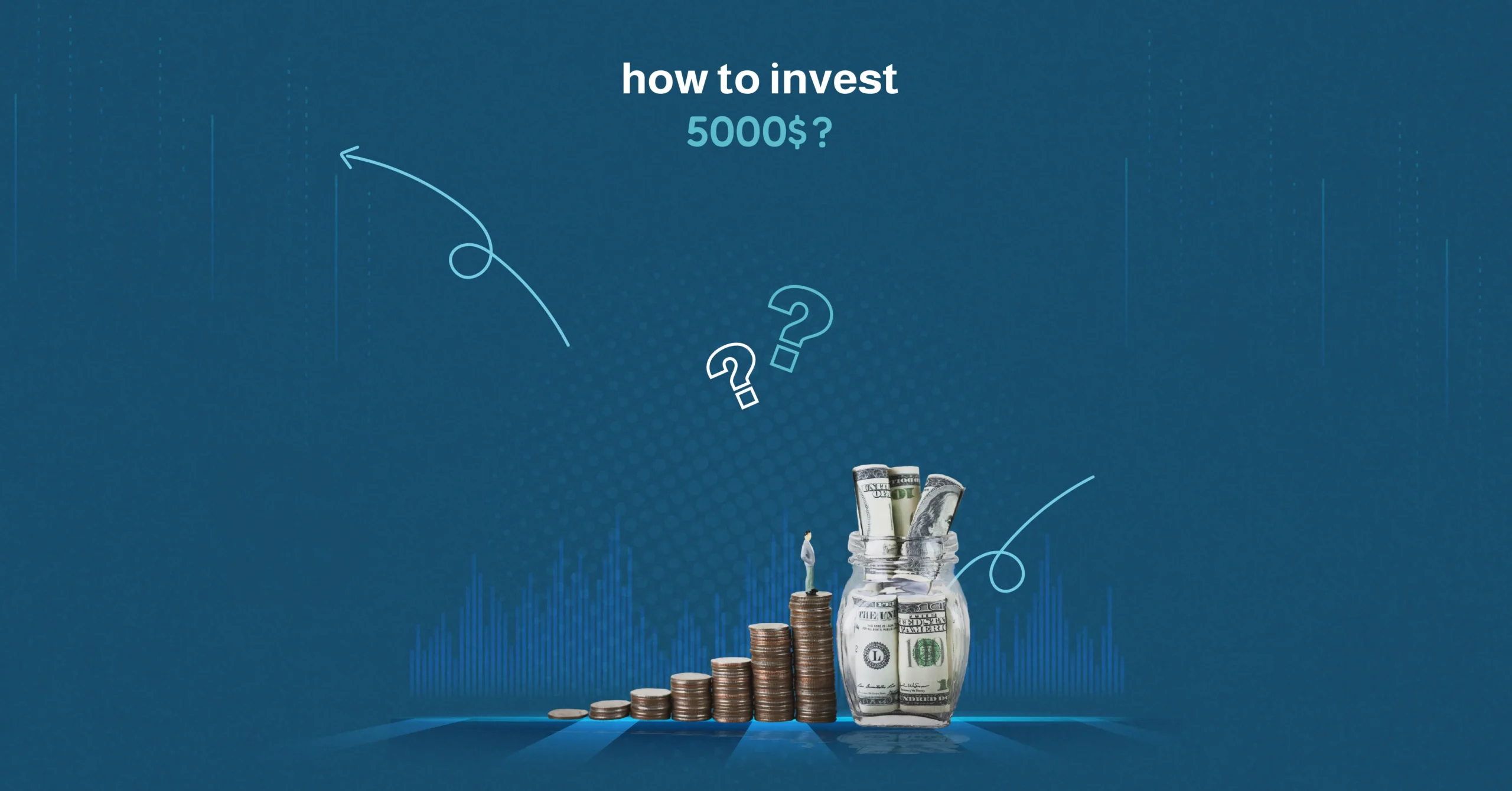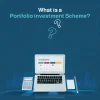When figuring out how to invest $5000, your first step is understanding what options are available to you. The good news is that $5000 opens doors to most investment vehicles, from individual stocks to diversified funds, bonds, and alternative investments.
Traditional Investment Accounts
Your $5000 can go into several account types depending on your goals. A Roth IRA lets you invest $5000 with tax-free growth, perfect if you’re under the annual contribution limit. Traditional IRAs offer tax deductions now, but you’ll pay taxes later. Regular taxable brokerage accounts allow you to withdraw money anytime without penalties.
Index Funds and ETFs
These are often the best starting points when investing $5000. Index funds tracking the S&P 500 typically require minimum investments between $1000-$3000, leaving you room to diversify. ETFs work like stocks but represent entire market segments, and you can buy them with no minimums at most brokers.
Individual Stocks
With commission-free trading at major brokers, you can buy individual stocks with your entire $5000. However, putting everything into one or two companies is risky. If you choose this route, consider limiting individual stock picks to 20-30% of your total investment.
Bonds and Fixed-Income
Government and corporate bonds provide steady income and portfolio stability. Treasury bonds are virtually risk-free, while corporate bonds offer higher yields with slightly more risk. Bond ETFs make investing in diversified bond portfolios easy with your $5000.
More topics can be read on the Gamma blog
Low-Risk Investments for Beginners
If you’re new to investing or want to protect your money first, low-risk options should form the foundation for investing $5000 safely. These investments won’t make you rich overnight, but they protect your money while generating modest returns.
High-Yield Savings Accounts and CDs
While technically not investments, high-yield savings accounts offer 4-5% annual returns with complete safety. Certificates of deposit lock in rates for specific periods, often yielding slightly more than savings accounts. Consider keeping $1000-$1500 of your $5000 in these ultra-safe options as an emergency buffer.
Treasury Securities
U.S. Treasury bills, notes, and bonds are backed by the government’s full faith and credit. Treasury Inflation-Protected Securities (TIPS) specifically guard against inflation risk. You can buy treasuries directly through TreasuryDirect.gov or via ETFs like SCHZ or BIL with portions of your $5000.
Conservative Index Funds
Target-date funds automatically adjust risk levels based on your expected retirement date. Conservative balanced funds typically hold 60-70% stocks and 30-40% bonds. Examples include Vanguard Conservative Growth Fund (VSCGX) or options accepting $5000 initial investments.
Dividend-Focused Investments
Dividend aristocrats are companies that have increased dividends for 25+ consecutive years. Dividend ETFs like VYM or SCHD let you invest in hundreds of dividend-paying companies with a single purchase. These provide regular income plus potential capital appreciation.
A conservative allocation might split your $5000 like this: $2000 in total stock market index funds, $1500 in bond funds, $1000 in high-yield savings, and $500 in dividend ETFs. This approach puts stability first while still participating in market growth.
Moderate and High-Risk Options for Growth
Once you understand how to invest $5000 conservatively, you should allocate portions to higher-growth potential investments. These carry more risk but offer greater upward potential over more extended periods.
Growth-Oriented Index Funds
Small-cap and international funds historically outperform large-cap U.S. stocks over long periods, though with higher volatility. Consider putting $1000-$1500 of your $5000 into funds like VTI (total U.S. stock market), VTIAX (international stocks), or VB (small-cap stocks).
Technology and Sector ETFs
Technology drives economic growth, making tech ETFs like QQQ or VGT attractive for younger investors. Sector rotation strategies involve moving money between different industries based on economic cycles. Healthcare (VHT), financial services (VFH), and energy (VDE) sectors each offer different risk-return profiles.
Individual Growth Stocks
Individual stocks can provide outsized returns if you’re comfortable with research and higher risk. Focus on companies with substantial competitive advantages, growing revenues, and expanding markets. Popular growth stocks include established tech companies, renewable energy firms, and innovative healthcare companies.
Real Estate Investment Trusts (REITs)
REITs let you invest in real estate without buying property directly. They must distribute 90% of income as dividends, providing a steady cash flow. REIT ETFs like VNQ or SCHH offer diversified real estate exposure for portions of your $5000.
Cryptocurrency (Small Allocation)
Bitcoin and Ethereum have gained mainstream acceptance, but remain highly volatile. If you’re interested in crypto, limit it to 5-10% of your total investment ($250-$500 of your $5000). Use reputable exchanges like Coinbase or consider crypto ETFs for easier management.
A moderate-risk allocation might consist of $2000 in broad market index funds, $1000 in growth stocks or sector ETFs, $1000 in international funds, $500 in REITs, and $500 in bonds or cash equivalents.
How to Diversify Even With a Small Investment
Many new investors think $5000 isn’t enough for proper diversification, but that’s false. Modern investment tools make it possible to spread risk effectively, even with limited capital. Investing $5000 across multiple asset classes reduces your overall portfolio risk.
Asset Class Diversification
Divide your $5000 across different asset types: stocks (domestic and international), bonds (government and corporate), real estate (REITs), and perhaps commodities (via ETFs). A simple three-fund portfolio might put $3000 into the total stock market, $1500 into international stocks, and $500 into bonds.
Geographic Diversification
Don’t limit yourself to U.S. investments. International developed markets (Europe, Japan, Australia) and emerging markets (China, India, Brazil) often move independently from U.S. markets. Vanguard’s VTIAX or iShares’ IEFA provide broad international exposure with reasonable expense ratios.
Sector and Size Diversification
Large companies dominate most index funds, but small and mid-cap stocks often outperform over long periods. Value stocks (cheaper relative to earnings) and growth stocks (rapidly expanding companies) also perform differently in various market conditions. Put portions of your $5000 across these different categories.
Time Diversification Through Dollar-Cost Averaging
Instead of investing your entire $5000 immediately, consider spreading purchases over 3-6 months. This dollar-cost averaging approach reduces the impact of market timing and volatility. Invest $800-$1000 monthly, buying more shares when prices drop and fewer when prices rise.
Rebalancing Strategy
Set target percentages for each investment type and rebalance quarterly or semi-annually. If stocks perform well and exceed your target allocation, sell some and buy more bonds or underperforming assets. This disciplined approach forces you to buy low and sell high systematically.
A well-diversified $5000 portfolio might include: 40% U.S. total market ($2000), 20% international developed markets ($1000), 10% emerging markets ($500), 20% bonds ($1000), and 10% REITs ($500). Adjust these percentages based on age, risk tolerance, and financial goals.
Complementing Your Portfolio With Gamma
As you develop your strategy for investing $5000, consider how alternative investment platforms can enhance your traditional portfolio. While stocks, bonds, and funds form your foundation, platforms specializing in real-world assets can provide additional diversification and potentially higher yields.
Asset-Backed Investment Benefits
Traditional portfolios sometimes lack exposure to tangible assets beyond REITs. Gamma Assets provides opportunities to balance higher-risk investments with real-world, asset-backed options. These investments often have lower correlation with stock market movements, providing stability during market downturns.
Portfolio Integration Strategy
After establishing your core holdings, consider putting 10-20% of your $5000 ($500-$1000) into alternative platforms. This approach lets you maintain broad market exposure through index funds while exploring specialized opportunities in tangible assets, private equity, or other alternative investments.
Risk Assessment and Due Diligence
Before committing portions of your $5000 to any alternative platform, research their track record, fee structure, and investment criteria. Look for platforms with transparent reporting, diversified offerings, alignment with your investment timeline, and risk tolerance.
Gradual Allocation Approach
Start small with alternative investments while you learn how they fit into your broader strategy. Begin with $250-$500 allocations and increase gradually as you become more comfortable with the platform and understand how these investments perform relative to your traditional holdings.
Remember that alternative investments often have liquidity terms that are different from stocks and bonds. Ensure you maintain adequate liquid investments for emergencies and short-term needs before committing significant portions of your $5000 to less liquid alternatives.
Growing Your $5000 Investment
Learning how to invest $5000 effectively sets the stage for long-term wealth building. The strategies and allocations we’ve discussed here provide frameworks rather than rigid rules. Your specific situation, goals, timeline, and comfort with risk should guide your final decisions.
Start with broad diversification through low-cost index funds, then gradually add complexity as your knowledge and confidence grow. Regular contributions matter more than perfect timing or picking winning stocks. Adding $100-$200 monthly to your initial $5000 investment can dramatically improve long-term outcomes.
Monitor your investments regularly, but avoid making frequent changes based on short-term market movements. Successful investing requires patience, discipline, and a long-term perspective. Your $5000 today could grow to $50,000 or more over the next 20-30 years with consistent investing and reasonable returns.
Most importantly, start now rather than waiting for more money or perfect market conditions. Time in the market beats timing the market, and compound growth works best over extended periods. Your $5000 investment journey begins with that first purchase, and each decision builds upon your growing experience and knowledge.
You can start investing now from the Gamma Asset Investment Platform
Frequently Asked Questions
Is $5000 enough to start investing?
Absolutely. $5000 provides sufficient capital to create a diversified portfolio across multiple asset classes. Many successful investors started with similar amounts, and modern brokers offer commission-free trading and low minimum investments that make $5000 more than adequate for beginning your investment journey.
Should I invest it all at once or gradually?
Both approaches have merit. Lump-sum investing often produces better long-term returns since markets generally trend upward. However, dollar-cost averaging over 3-6 months can reduce anxiety and timing risk. Consider your comfort level and market conditions when investing $5000.
What mix of assets works best for small investors?
A simple three-fund portfolio works well: 60-70% total stock market index, 20-30% international stocks, and 10-20% bonds. Adjust percentages based on your age and risk tolerance. Younger investors can emphasize stocks for growth, while those closer to retirement might prefer more bonds for stability.













